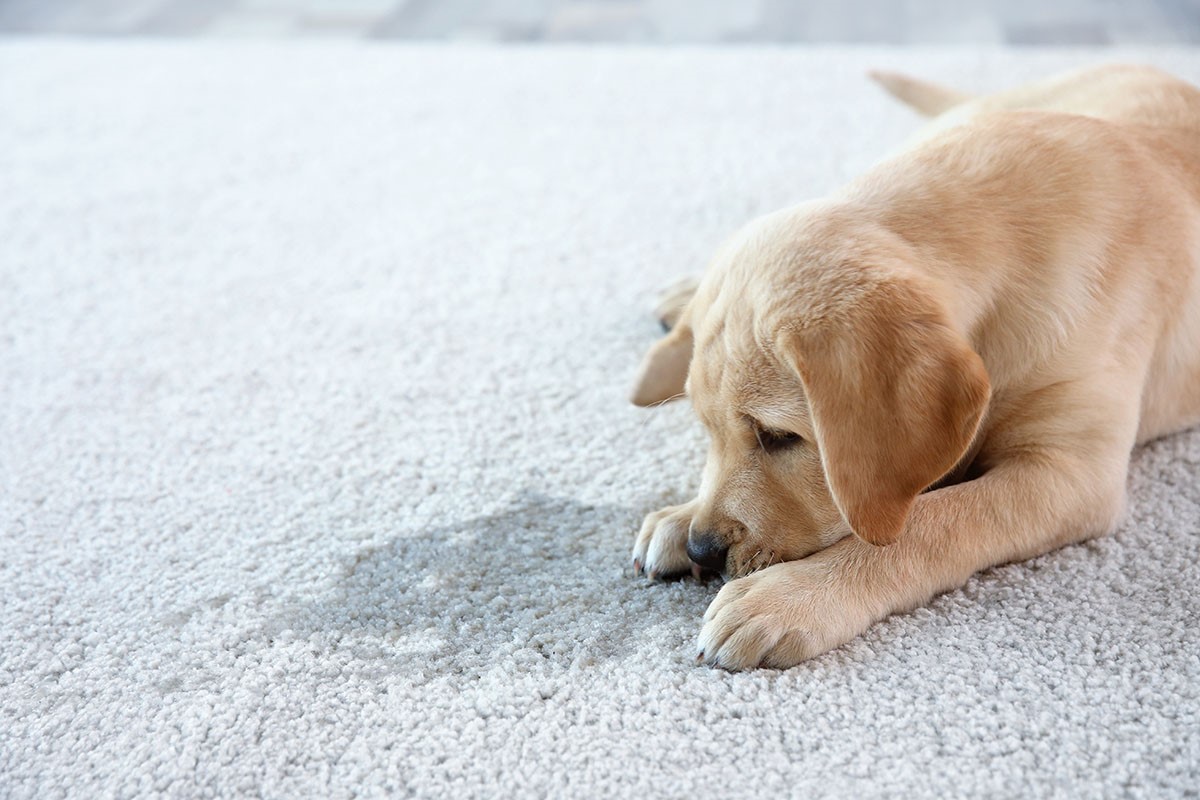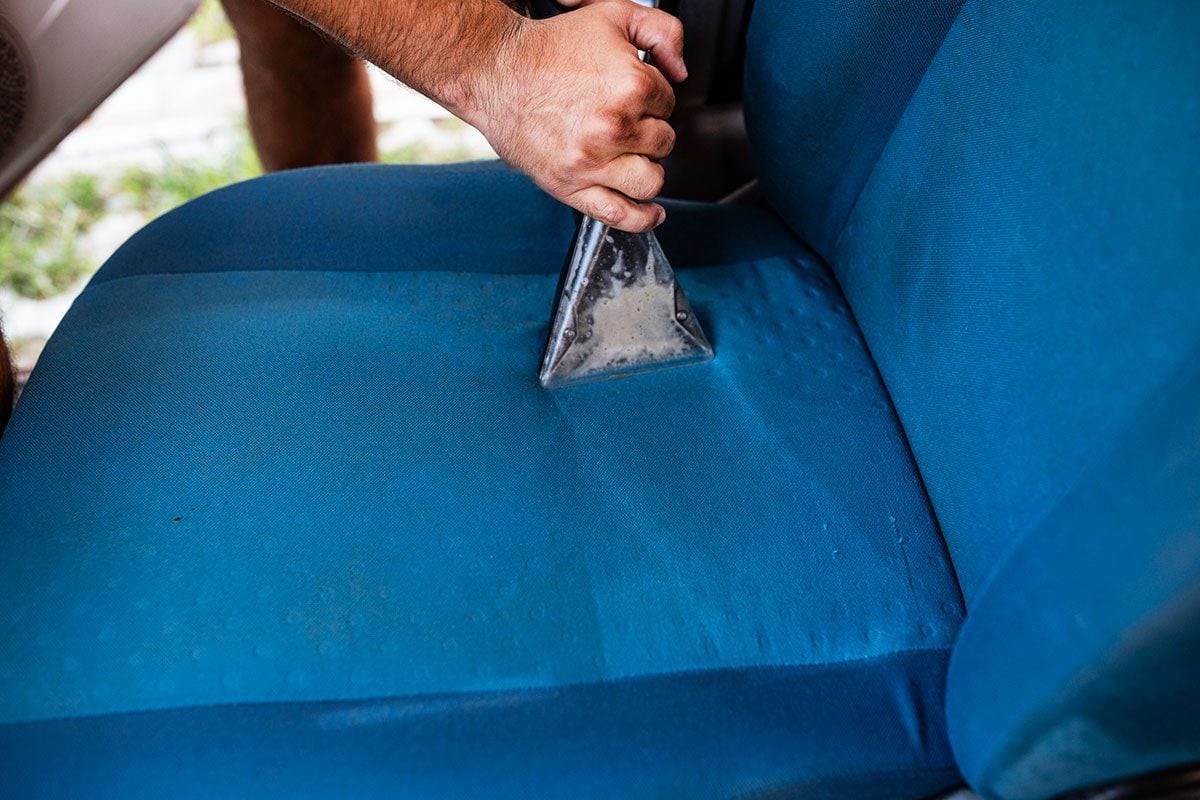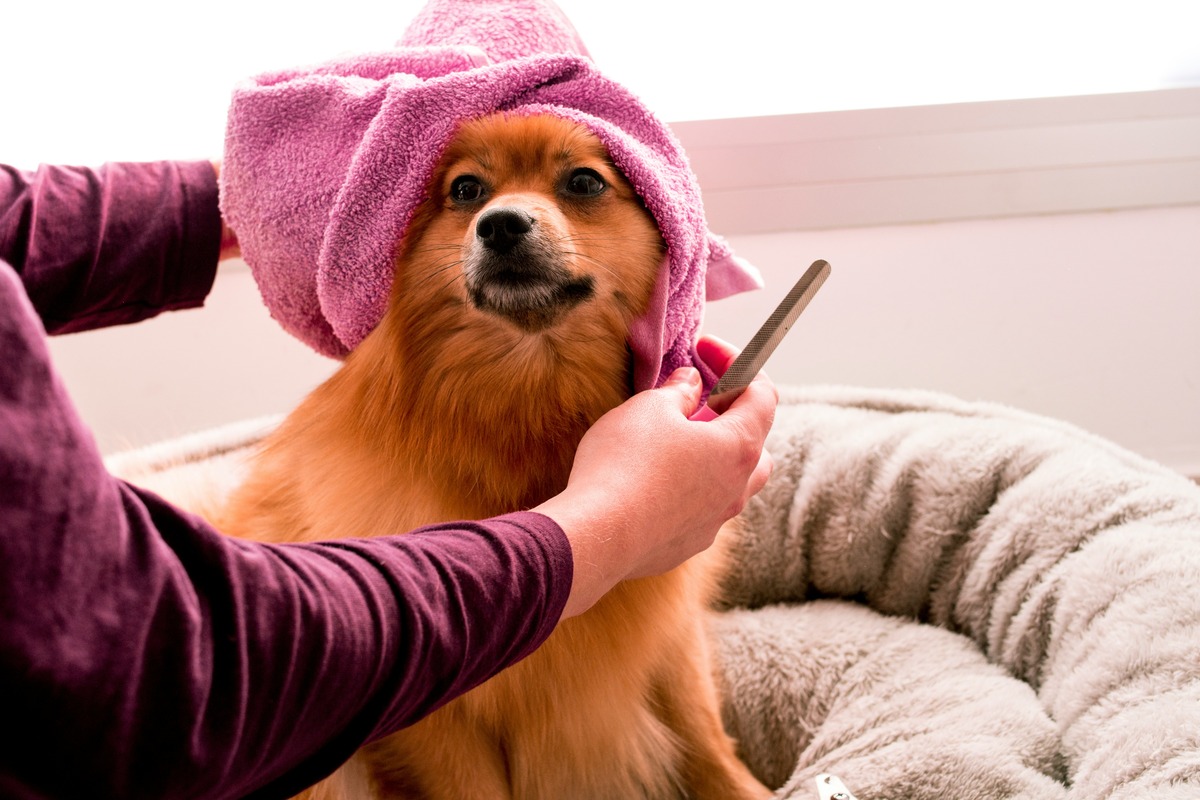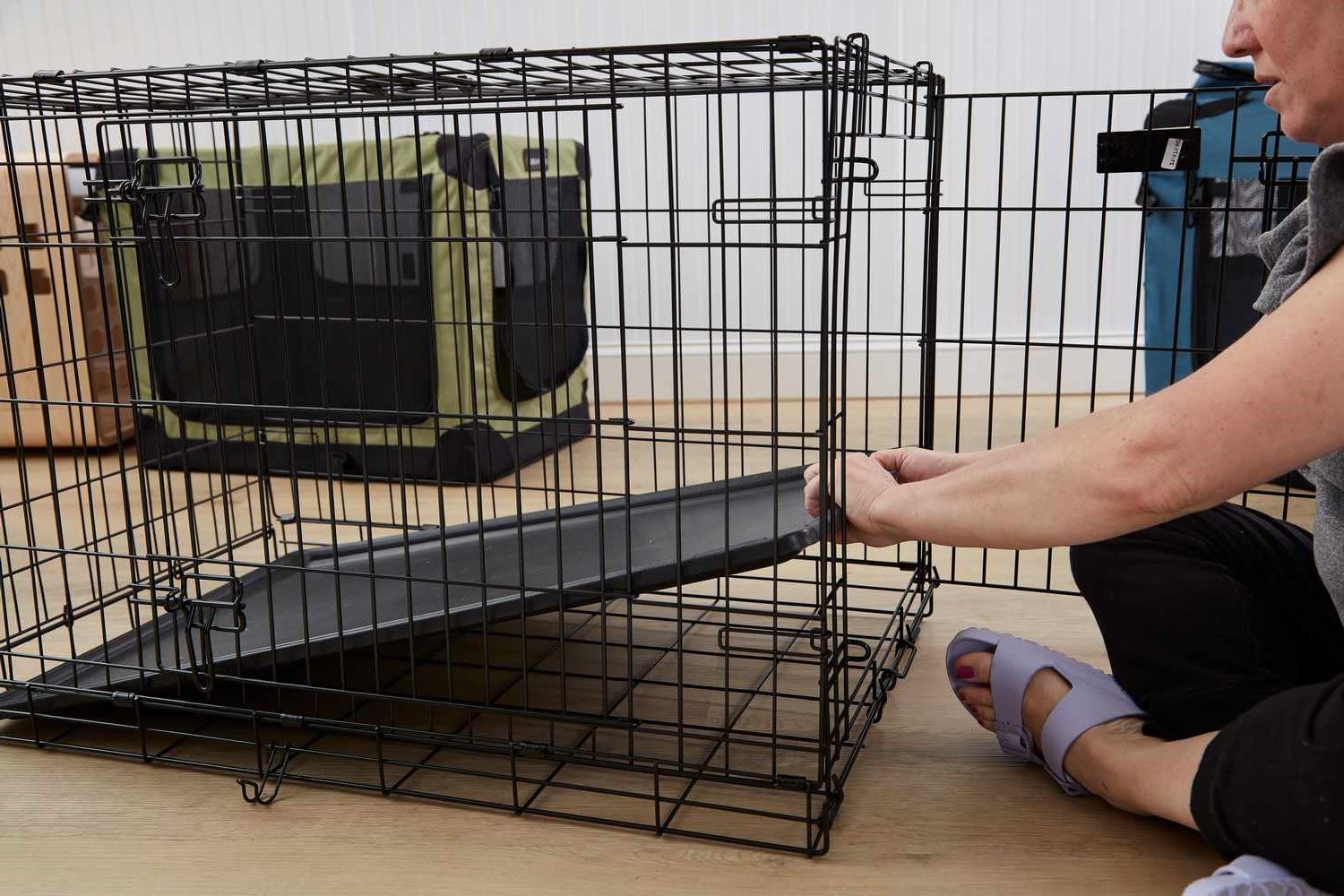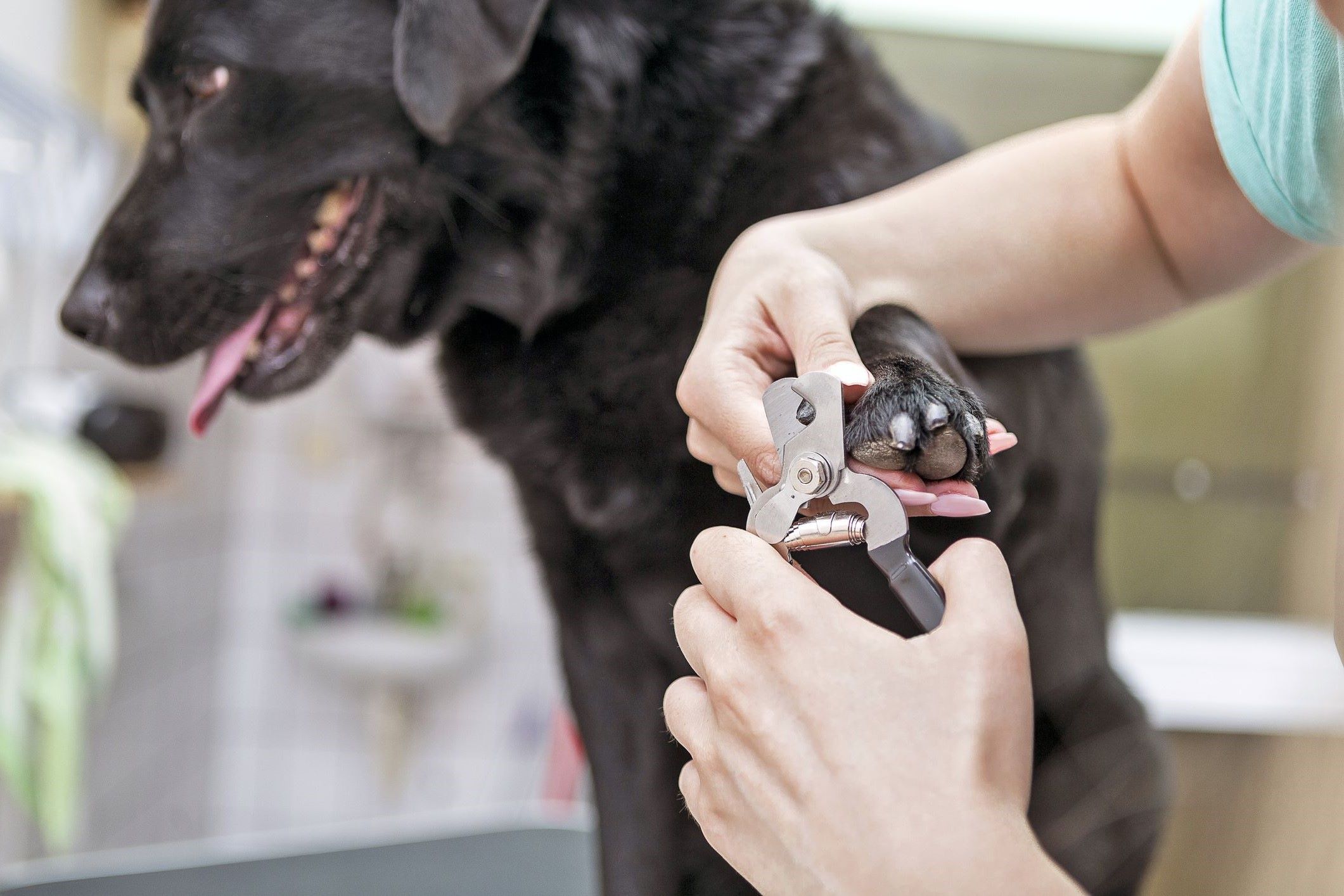Home>Pets & Animals>How To Collect Urine Sample From Dog
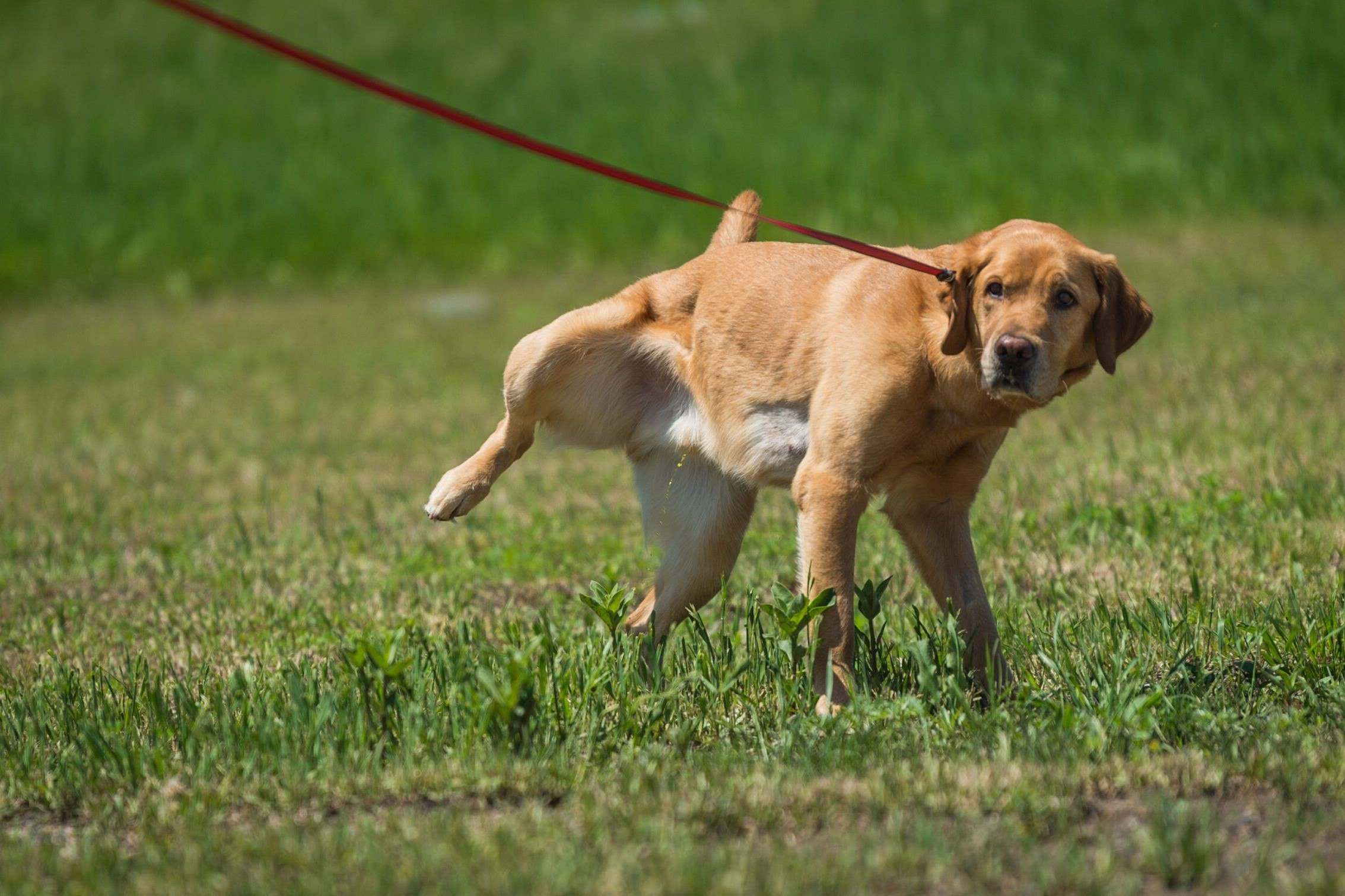

Pets & Animals
How To Collect Urine Sample From Dog
Published: March 7, 2024
Learn how to collect a urine sample from your dog at home with our step-by-step guide. Keep your pets healthy and happy with our expert tips.
(Many of the links in this article redirect to a specific reviewed product. Your purchase of these products through affiliate links helps to generate commission for Noodls.com, at no extra cost. Learn more)
Table of Contents
Introduction
Collecting a urine sample from a dog is a crucial aspect of veterinary care that allows for the diagnosis and monitoring of various health conditions. Whether it's for a routine check-up or to investigate a specific health concern, obtaining a urine sample is a valuable diagnostic tool for veterinarians. Understanding the process of collecting a urine sample from your canine companion is essential for ensuring their well-being.
The collection of a urine sample from a dog is a relatively simple procedure that can be performed at home with the right guidance. By learning the proper techniques and understanding the significance of this process, pet owners can actively participate in their dog's healthcare and contribute to the early detection and management of potential health issues.
In this comprehensive guide, we will delve into the importance of collecting a urine sample from dogs, the necessary preparations for this procedure, various methods for urine collection, and valuable tips to ensure a successful outcome. By familiarizing yourself with these essential aspects, you can confidently navigate the process of obtaining a urine sample from your dog, ultimately supporting their overall health and well-being.
Read more: How To Stop Dogs From Whining
Understanding the Importance of Collecting a Urine Sample
Collecting a urine sample from a dog holds significant importance in the realm of veterinary care. The analysis of a dog's urine provides valuable insights into its overall health and can aid in the early detection, diagnosis, and monitoring of various medical conditions. Understanding the significance of this process empowers pet owners to actively participate in their dog's healthcare and contribute to their well-being.
Urine serves as a window into the body's internal functions, offering vital clues about the dog's kidney function, hydration status, and potential presence of underlying health issues. Through a comprehensive urinalysis, veterinarians can assess the dog's kidney and liver function, screen for urinary tract infections, identify the presence of blood or crystals in the urine, and detect signs of diabetes or other metabolic disorders.
Furthermore, urine samples play a crucial role in monitoring the response to treatment for existing health conditions. For instance, in cases of urinary tract infections, diabetes, or kidney disease, regular urine analysis enables veterinarians to evaluate the effectiveness of prescribed medications and treatment plans, guiding adjustments as necessary to ensure optimal care for the dog.
Early detection of health issues is paramount in providing timely intervention and preventing the progression of potential complications. By routinely collecting and analyzing urine samples, pet owners and veterinarians can identify underlying health concerns at their nascent stages, facilitating prompt and targeted medical interventions. This proactive approach can significantly improve the prognosis for various health conditions, ultimately enhancing the dog's quality of life.
In summary, the collection and analysis of urine samples from dogs are indispensable tools for maintaining their health and well-being. By recognizing the importance of this diagnostic process, pet owners can actively engage in their dog's healthcare, working in tandem with veterinarians to ensure comprehensive and proactive medical care for their beloved canine companions.
Preparing to Collect the Urine Sample
Before embarking on the process of collecting a urine sample from your dog, it is essential to make thorough preparations to ensure a smooth and successful procedure. Adequate preparation not only facilitates the urine collection process but also minimizes stress for both the dog and the pet owner. Here are the key steps to prepare for collecting a urine sample from your canine companion:
-
Gather Necessary Supplies: Assemble all the essential supplies required for urine collection, including a clean and sterile container for holding the urine sample, disposable gloves, and disinfectant wipes for maintaining hygiene during the process.
-
Select an Appropriate Collection Method: Consider the most suitable method for collecting the urine sample based on your dog's size, behavior, and comfort level. Common methods include free catch, non-absorbent non-clumping litter, or specialized urine collection kits available at veterinary clinics.
-
Observe the Dog's Routine: Familiarize yourself with your dog's typical urination schedule. Take note of the times when your dog usually urinates, as this information can help you plan the urine collection process more effectively.
-
Prepare the Collection Area: Choose a quiet and comfortable space for the urine collection process. Ensure that the selected area is easily accessible and free from distractions to minimize any potential stress or anxiety for the dog.
-
Establish a Calm Environment: Create a calm and reassuring atmosphere to help relax your dog during the urine collection process. Providing gentle reassurance and positive reinforcement can help alleviate any apprehension or nervousness your dog may experience.
-
Communicate with Your Veterinarian: If the urine sample is being collected for a specific diagnostic purpose, it is advisable to consult with your veterinarian beforehand. They can provide valuable guidance on the collection process and any specific instructions tailored to your dog's individual health needs.
By diligently preparing for the urine collection process, pet owners can streamline the procedure and create a conducive environment for their dog's comfort and well-being. These preparatory measures lay the foundation for a successful urine collection experience, ultimately contributing to the overall effectiveness of the diagnostic process and the dog's ongoing healthcare.
Methods for Collecting Urine from a Dog
When it comes to collecting urine from a dog, several methods can be employed based on the dog's size, behavior, and individual preferences. Each method is designed to facilitate the collection process while ensuring the comfort and well-being of the dog. Here are the primary methods for collecting urine from a dog:
-
Free Catch Method: This method involves directly collecting the urine as the dog urinates. It is suitable for dogs who are comfortable urinating in the presence of their owners. To utilize this method, a clean and sterile container is held beneath the dog as it urinates, allowing the urine to be collected directly into the container. It is essential to maintain a steady hand and ensure that the container does not come into contact with the dog to maintain hygiene.
-
Non-Absorbent Non-Clumping Litter Method: For dogs who are accustomed to urinating on a specific surface, non-absorbent non-clumping litter can be utilized to facilitate urine collection. A shallow container filled with the litter is presented to the dog, encouraging it to urinate within the designated area. The non-absorbent nature of the litter allows the urine to pool on the surface, making it easier to collect using a sterile syringe or pipette.
-
Specialized Urine Collection Kits: Veterinary clinics offer specialized urine collection kits designed to simplify the urine collection process. These kits often include non-invasive methods such as urine collection cups or non-absorbent pads that can be placed beneath the dog to capture the urine. These kits are particularly useful for dogs who may not readily cooperate with traditional collection methods.
-
Expression Method: In certain cases, particularly when a dog is unable to urinate voluntarily due to medical conditions such as urinary retention, manual expression of the bladder may be necessary. This method involves gently applying pressure to the dog's lower abdomen to encourage the release of urine. It is crucial to seek guidance from a veterinarian before attempting this method to ensure it is performed safely and without causing discomfort to the dog.
By understanding and implementing these various methods for collecting urine from a dog, pet owners can select the most suitable approach based on their dog's behavior and individual needs. Each method is designed to facilitate the urine collection process while prioritizing the dog's comfort and well-being, ultimately contributing to a successful and stress-free experience for both the pet owner and their canine companion.
Tips for a Successful Urine Collection
Successfully collecting a urine sample from your dog requires careful planning and execution. Here are essential tips to ensure a smooth and effective urine collection process:
-
Maintain Patience and Calmness: Approach the urine collection process with patience and a calm demeanor. Dogs are highly attuned to their owners' emotions, and a relaxed atmosphere can help alleviate any anxiety or apprehension they may feel.
-
Timing is Key: Familiarize yourself with your dog's urination schedule to anticipate the best times for urine collection. This proactive approach can increase the likelihood of obtaining a sufficient sample.
-
Positive Reinforcement: Encourage and praise your dog throughout the urine collection process. Offering treats or verbal praise can create a positive association with the procedure, making it a more comfortable experience for your canine companion.
-
Hygiene Matters: Prioritize hygiene by using clean, sterile containers for urine collection. Disposable gloves should be worn to prevent contamination, and the collection area should be thoroughly cleaned before and after the process.
-
Minimize Stress: Choose a quiet and familiar location for urine collection to minimize stress for your dog. Minimizing distractions and creating a calm environment can help your dog feel more at ease during the process.
-
Observe from a Distance: If using the free catch method, maintain a respectful distance while observing your dog urinate. This allows for a natural urination behavior without causing any disruption.
-
Seek Professional Guidance: If you encounter challenges or have concerns about the urine collection process, do not hesitate to seek guidance from your veterinarian. They can offer valuable insights and tailored recommendations based on your dog's specific needs.
-
Stay Consistent: Consistency in the urine collection process can help your dog become more accustomed to the procedure over time. Establishing a routine can reduce apprehension and make future collections more manageable.
By implementing these tips, pet owners can enhance the likelihood of a successful urine collection from their dogs. The careful application of these strategies can contribute to a stress-free and effective urine collection process, ultimately supporting the dog's overall health and well-being.
Read more: How To Stop A Dog From Digging
Conclusion
In conclusion, the process of collecting a urine sample from a dog is an integral aspect of proactive veterinary care and plays a pivotal role in maintaining the overall health and well-being of canine companions. By understanding the significance of urine analysis and familiarizing themselves with the necessary preparations and collection methods, pet owners can actively contribute to their dog's healthcare journey.
The importance of urine sample collection cannot be overstated, as it serves as a valuable diagnostic tool for veterinarians to assess kidney function, screen for urinary tract infections, monitor hydration status, and detect the presence of underlying health conditions such as diabetes and kidney disease. Through routine urine analysis, early detection of health issues is made possible, enabling timely interventions and tailored treatment plans to be implemented, ultimately improving the prognosis for various medical conditions.
Preparation is key to a successful urine collection process, and pet owners are encouraged to gather the necessary supplies, select an appropriate collection method, observe their dog's urination routine, and establish a calm and conducive environment for the procedure. By diligently preparing for urine collection, pet owners can streamline the process and minimize stress for their canine companions, ensuring a more comfortable experience for all involved.
Various methods for collecting urine from dogs, including the free catch method, non-absorbent non-clumping litter method, and specialized urine collection kits, offer flexibility to accommodate different dog behaviors and preferences. Each method is designed to prioritize the dog's comfort while facilitating the collection process, empowering pet owners to select the most suitable approach based on their dog's individual needs.
Furthermore, implementing essential tips such as maintaining patience and calmness, timing the collection process, providing positive reinforcement, prioritizing hygiene, and seeking professional guidance when needed, can significantly enhance the likelihood of a successful urine collection experience.
By actively engaging in the urine collection process and collaborating with veterinarians, pet owners demonstrate a proactive approach to their dog's healthcare, contributing to early detection, effective management of health conditions, and ultimately supporting their beloved canine companions' overall well-being.
In essence, the process of collecting a urine sample from a dog is not only a diagnostic necessity but also a tangible way for pet owners to actively participate in their dog's healthcare, fostering a deeper bond and a shared commitment to ensuring the best possible quality of life for their furry friends.

